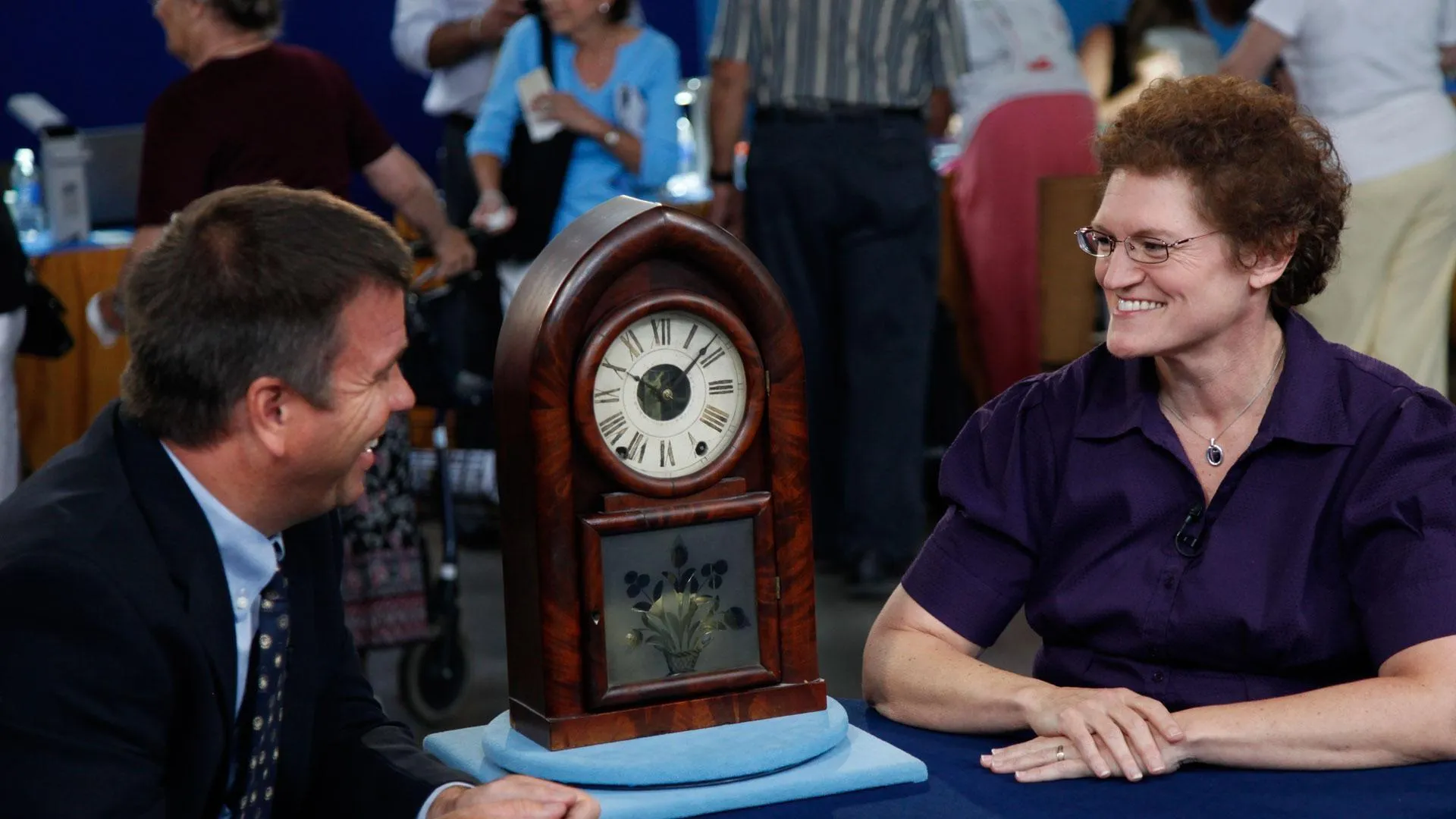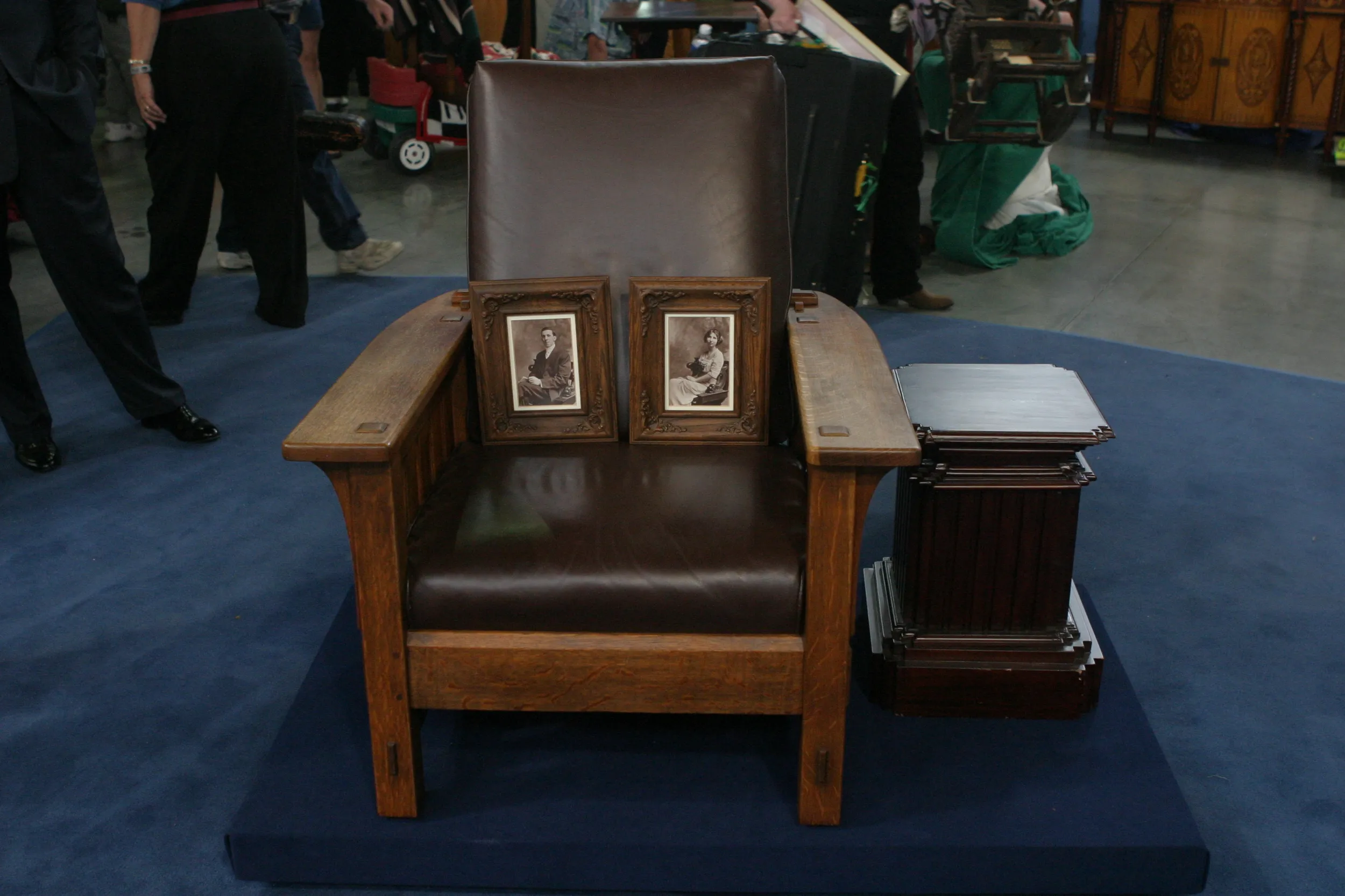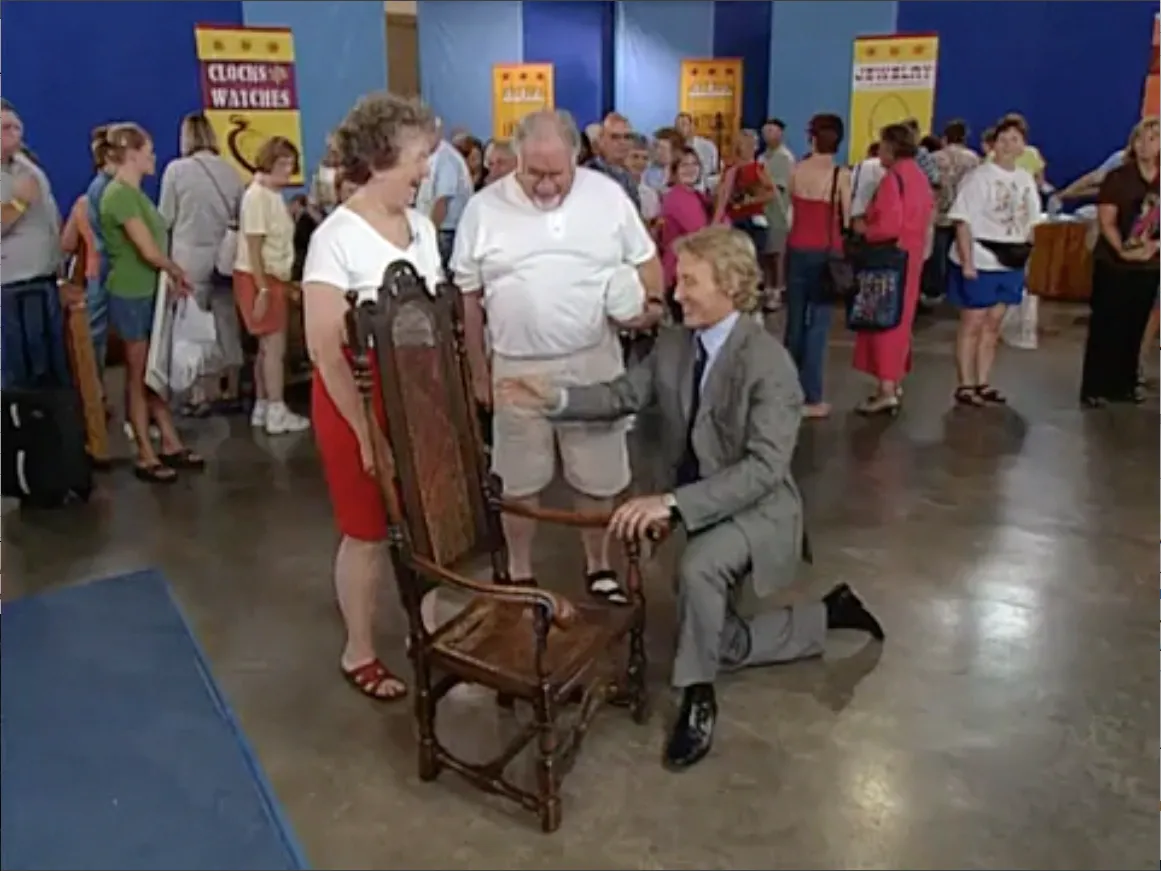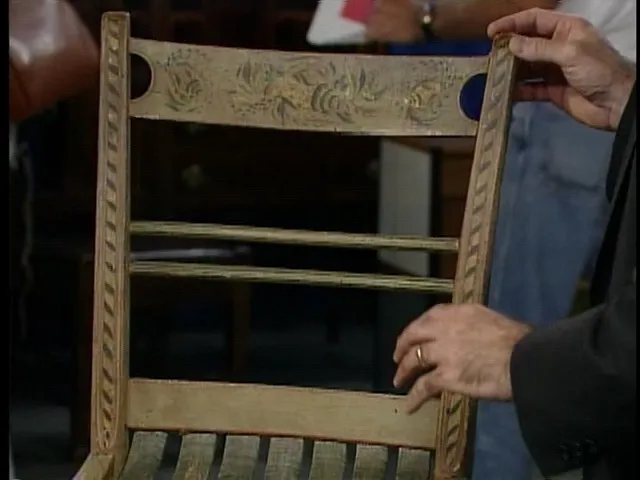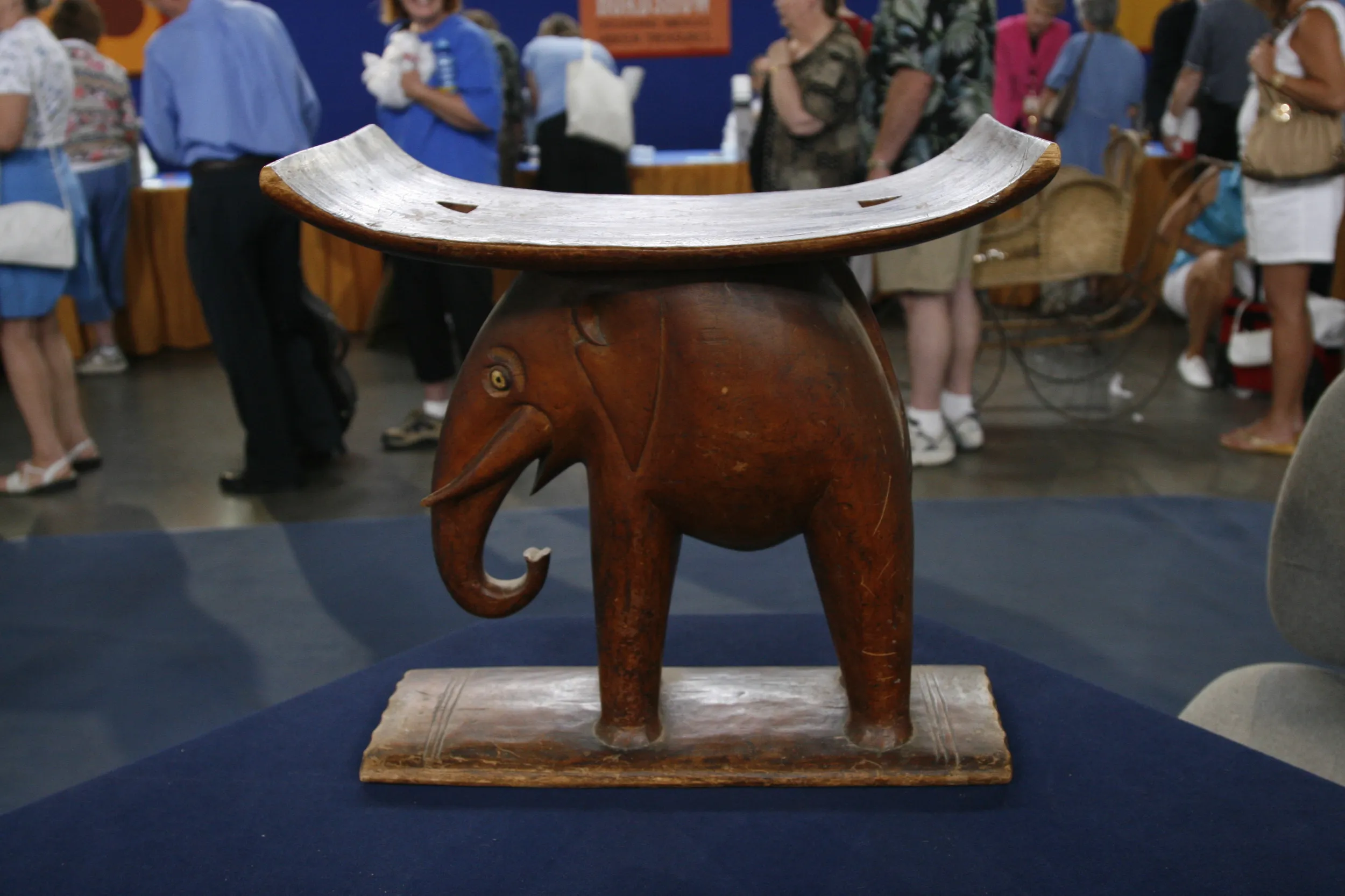GUEST: My mother-in-law was the true collector. And when she passed on, we inherited it. And she went out to Vermont, maybe 40 years ago, but when she came back, this came along with her with a couple other pieces.
APPRAISER: This is a furniture form which is a little bit unusual. We refer to it as a chair table. That's because, as you well know, it transforms from a table by lifting the top into a chair. It may look a little beat up, but this is wonderful sign of use. It's the story of the piece. This is an incredible, wide piece of pine that you can't find any more.
GUEST: Right.
APPRAISER: This probably was at the focal point of the social activities of the typical 18th century American household. Space was at a premium; furniture that could be multi-used, served as a work table-- obviously burn stains, markings.
GUEST: Probably chopped on it, did everything.
APPRAISER: Chopped on, scrubbed. And probably, with all of that use over the years, the table got so worn down that these wonderful nails, which hold on the batten ends, now show through. Let's tilt it up. What is remarkable about this is that, with one exception, every piece seems to be original. The one replacement is this.
GUEST: Really?
APPRAISER: The turning mechanism. And that's because it was used so much it wore out. The tradition that this comes out of is from northern Europe and England. It was brought here to the... particularly New England, New York colonies by both Dutch and English craftsmen. So here we have it in its chair form. Here we have all the evidence of what the original coloration of the entire piece was.
GUEST: Do you think the entire piece was this old red?
APPRAISER: The entire piece because this is pine, this is pine, this is maple, maple. And so to make that all uniform, they would have put a stain just like this. And when I talk about its multi-functional uses, do you know what all of these little circles are?
GUEST: No, I noticed that and I thought, well, someone had trouble with their hammer.
APPRAISER: They run all the way around the table. What women in the 18th century used to do was for sewing they used something called a sewing bird.
GUEST: I have two at home.
APPRAISER: You have two at home.
GUEST: I have two at home. That's what that is.
APPRAISER: They would have clipped it on here. The beak had a spring and it held the thread.
GUEST: I'll be darned.
APPRAISER: And so this table saw a lot of sewing. The turnings here-- these sort of honey dipper-shaped things-- that's what we tend to see up the Connecticut River Valley.
GUEST: Really?
APPRAISER: And so Vermont, as an origin for it, is highly probable. Or northern Massachusetts. And I have to tell you that the person who made this piece, he was a pretty skilled turner. He was not so good as a cabinetmaker because these parts are pretty much cobbled together. I think that this is probably at the very end date of this form, probably about 1800.
GUEST: Okay.
APPRAISER: Any idea of what your mother paid?
GUEST: I have no idea whatsoever.
APPRAISER: Well, this is a wonderful example. It tells a wonderful story. It's almost completely intact. And, at auction, I would expect it would bring $2,000 to $3,000, possibly $2,000 to $4,000.
GUEST: Really? Wow.
APPRAISER: And my guess is if she bought it 30 years ago, she probably paid about $750. A nice piece, and thank you so much.
GUEST: A good investment, thank you.

